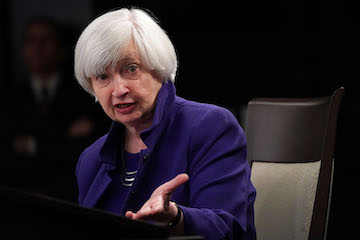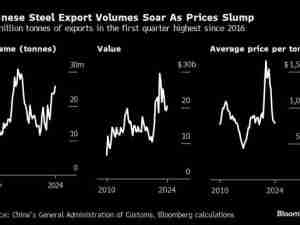The U.S. said China continues to focus its policies on exports, and called on its biggest economic rival to implement forceful measures to boost domestic demand.
“China’s recovery has been highly imbalanced” since the hit from the coronavirus pandemic, the U.S. Treasury Department said in its semiannual foreign-exchange report. “Stringent containment measures enabled China to quickly resume manufacturing while domestic consumption lagged.”
While Chinese President Xi Jinping has championed what his government calls a “dual circulation” development model, in which the domestic economy serves as the main growth driver, the U.S. Treasury had a different take. “China’s focus on policies that support external demand” contributed to the country’s widening current-account surplus last year, along with temporary effects from Covid-19, such as overseas demand for medical products.
“Lackluster private demand—underpinned by continued weakness in the labor market—raises concerns that China’s growth cannot be sustained absent greater official support for household consumption,” the Treasury said. “China should take decisive steps to allow for greater market openness by implementing structural reforms to reduce state intervention, enhancing social safety nets and increasing spending on health care and unemployment benefits, and permitting a greater role for market forces.”
The Treasury assessed China’s fiscal response to the pandemic as “limited compared to many G-20 economies,” with an initial focus on health spending and fee reductions, followed by stepped-up public infrastructure spending.
Treasury Secretary Janet Yellen refrained, in the report, from labeling China a manipulator of its currency in the way her predecessor did for several months, though the Biden administration did urge greater transparency in the yuan’s management. The Treasury highlighted a lack of clarity about state-owned banks’ large foreign-exchange purchases.

China’s official foreign-exchange reserves rose by $109 billion last year, compared with a gain of almost $180 billion in a separate gauge of foreign-exchange purchases.
“The divergence between these indicators widened in the second half of 2020 to its largest level since 2015,” the Treasury said in the report released Friday. The reason for the discrepancy could be commercial reasons, though intervention by state-owned banks could be involved, the department said.
“Overall, this development highlights the need for China to improve transparency regarding its foreign exchange intervention activities,” the Treasury said. The U.S. kept China on a watch list for monitoring exchange-rate management.






